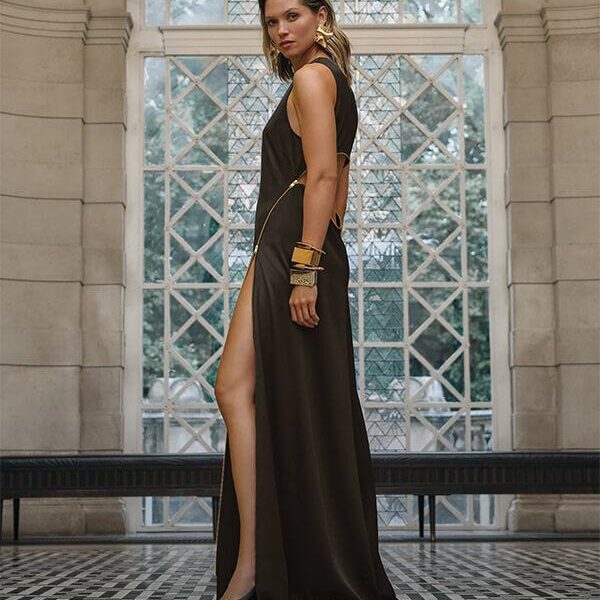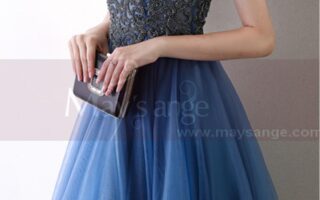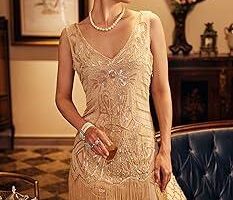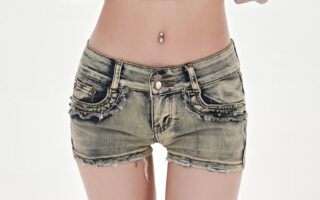In a world where fashion trends ebb and flow with the seasons, the quest for high-quality women’s clothing remains a timeless endeavor. While fast fashion often lures consumers with its catchy prices and fleeting styles, a growing movement advocates for a more discerning approach—one that prioritizes craftsmanship, durability, and timeless elegance. High-quality garments not only elevate personal style but also embody the essence of sustainability and conscious consumption. This article delves into the myriad facets of high-quality women’s clothing, exploring what sets it apart, the benefits it offers, and how to curate a wardrobe that celebrates quality over quantity. Join us on this journey to discover the art of dressing well and investing in pieces that stand the test of time.
Table of Contents
- Elevating Your Wardrobe: The Importance of Quality Fabrics
- Timeless Styles: Investing in Versatile Pieces for Every Occasion
- Sustainable Choices: The Rise of Ethical Fashion in Womens Apparel
- Mastering Fit and Tailoring: How to Achieve the Perfect Look
- Q&A
- Wrapping Up
Elevating Your Wardrobe: The Importance of Quality Fabrics
When building a stylish wardrobe, the choice of fabric plays a pivotal role in defining the overall quality and longevity of your garments. Investing in high-quality fabrics not only enhances the aesthetic appeal of clothing but also impacts comfort and durability. Fabrics like silk, wool, and premium cotton, for example, boast remarkable characteristics that contribute to a refined look. Here are some notable benefits of opting for superior materials:
- Longevity: High-quality fabrics withstand wear and tear, allowing you to enjoy your favorite pieces for years.
- Comfort: Premium materials are often softer and more breathable, providing all-day comfort and ease of movement.
- Versatility: Quality fabrics can be dressed up or down, making them suitable for various occasions.
Furthermore, the benefits of investing in excellent materials extend beyond personal satisfaction. Quality clothing can serve as a subtle statement of your style and confidence. Consider the differences between various fabric types:
| Fabric Type | Key Features | Best for |
|---|---|---|
| Silk | Luxurious, smooth finish; drapes beautifully | Formal events, evening wear |
| Wool | Warm, breathable; resists wrinkles | Winter wear, tailored pieces |
| Cotton | Soft, hypoallergenic; easy to care for | Casual wear, everyday attire |
Timeless Styles: Investing in Versatile Pieces for Every Occasion
When it comes to building a wardrobe that stands the test of time, investing in versatile pieces is key. These high-quality garments not only look and feel luxurious but also adapt seamlessly to a myriad of occasions. Consider the following essentials that every woman should have in her collection:
- Classic Silk Blouse: Easily dressed up or down, perfect for both the office and dinner dates.
- Tailored Blazer: A polished addition that can transform casual outfits into sophisticated ensembles.
- Little Black Dress: A must-have for any event, from cocktail parties to formal gatherings.
- High-Quality Denim: Comfortable yet stylish, suitable for weekend outings or casual Fridays.
- Chic Flats or Loafers: Comfortable footwear that pairs well with both dresses and trousers.
Each piece not only offers versatility but also reflects a commitment to quality that elevates your overall style. By opting for timeless designs and premium fabrics, you’re not just buying clothes; you’re investing in future staples that will remain relevant season after season. Here’s a simple comparison of how each category enhances your wardrobe:
| Piece | Occasions | Styling Tips |
|---|---|---|
| Silk Blouse | Work, Dates | Layer with a necklace or scarf for added flair. |
| Tailored Blazer | Work, Events | Pair with fitted trousers for a polished look. |
| Little Black Dress | Parties, Weddings | Accessorize with statement jewelry for impact. |
| High-Quality Denim | Casual Outings | Dress up with heels or down with sneakers. |
| Chic Flats | Everyday Wear | Choose neutral colors to match various outfits. |
Sustainable Choices: The Rise of Ethical Fashion in Womens Apparel
In recent years, the fashion industry has witnessed a remarkable shift towards greater sustainability. Consumers are becoming more aware of the impact their clothing choices have on the planet, prompting a demand for high-quality, ethically produced women’s apparel. As a result, brands are embracing materials that are both environmentally friendly and durable, ensuring that each piece not only captures the essence of style but also promotes a conscious lifestyle. The emergence of sustainable fabrics, such as organic cotton, Tencel, and recycled polyester, underscores a commitment to reducing waste while providing comfort and elegance.
Moreover, the emphasis on transparency within the supply chain is reshaping the criteria by which women evaluate their clothing options. Fashion labels are now more willing to disclose production processes and sourcing practices, empowering consumers to make informed decisions. This new landscape fosters a community where values align with purchases, creating linkages to social justice and fair labor practices. Here are some attributes that define this vibrant movement:
- Eco-friendly materials
- Fair labor practices
- Transparent production processes
Mastering Fit and Tailoring: How to Achieve the Perfect Look
Achieving the perfect look is not solely about the brand or design of your clothing; it’s also about how well these pieces fit and complement your physique. Understanding your body type is crucial in mastering fit and tailoring. Start by considering these fundamental aspects:
- Measurements: Know your bust, waist, and hip sizes to find garments that hug your curves in all the right places.
- Proportions: Balance is key—choose styles that enhance your natural silhouette.
- Fabric Choice: Different materials drape and stretch differently, influencing the overall fit of a garment.
Once you’ve selected the right pieces, fitting becomes essential. While off-the-rack clothing offers convenience, tailoring can elevate any outfit from standard to stunning. Here are some common alterations to consider:
| Alteration Type | Description |
|---|---|
| Hemming | Adjusting the length of skirts, pants, or dresses to leave a clean, polished edge. |
| Taking in | Narrowing the sides of a garment for a snugger fit around the waist or bust. |
| Letting out | Loosening the seams to provide extra room in fitted clothing. |
Q&A
Q&A: Exploring High-Quality Women’s Clothing
Q1: What defines high-quality women’s clothing?
A: High-quality women’s clothing is characterized by superior materials, craftsmanship, and design. It typically features durable fabrics that can withstand wear and tear while providing comfort. Attention to detail in stitching, lining, and finishing touches are also key indicators of quality. Additionally, a thoughtful and flattering design ensures that the garments not only fit well but also enhance the wearer’s confidence.
Q2: Why should one invest in high-quality clothing?
A: Investing in high-quality clothing often means you’re choosing longevity over fast fashion. Well-made pieces tend to last longer, reducing the need for frequent replacements. This not only saves money in the long run, but it also contributes to a more sustainable wardrobe. High-quality items often have a timeless appeal, making them versatile options that can transition through seasons and trends.
Q3: How can one identify high-quality materials?
A: Identifying high-quality materials requires a little practice. Look for natural fibers like cotton, silk, wool, and linen, as they generally offer greater durability and breathability compared to synthetic options. Check for fabric density—heavier fabrics often indicate better quality. Additionally, a good material will have a pleasant texture and drape beautifully when worn. Don’t forget to inspect the feel: soft, smooth fabrics are typically a sign of higher quality.
Q4: Is the price of clothing a reliable indicator of quality?
A: While price can be an indicator of quality, it is not always a guarantee. It’s important to assess the garment as a whole rather than relying solely on the price tag. Some brands may charge a premium for their name rather than the quality of their materials and construction. Researching the brand’s reputation, reading reviews, and examining product details can offer much clearer insights than price alone.
Q5: Where can one find high-quality women’s clothing?
A: High-quality women’s clothing can often be found in boutique shops and specialty stores that prioritize craftsmanship and unique designs. Additionally, many established brands focus on sustainable and ethical practices, producing garments with quality in mind. Online platforms dedicated to showcasing independent designers can also be a treasure trove for discerning shoppers. It’s worthwhile to explore thrift shops and second-hand stores, too; vintage pieces can offer remarkable quality and distinctiveness.
Q6: How can high-quality clothing contribute to sustainable fashion?
A: High-quality clothing plays a crucial role in sustainable fashion as it promotes a shift away from the fast-fashion cycle. By choosing durable garments that last longer, consumers can help reduce waste and slow down the demand for mass-produced clothing. Many high-quality brands are also committed to ethical production practices, ensuring fair labor and minimal environmental impact. Investing in quality allows consumers to support a more sustainable fashion ecosystem.
Q7: Can high-quality clothing be stylish?
A: Absolutely! High-quality clothing often features timeless styles and innovative designs that celebrate the diversity of women’s fashion. With a focus on both aesthetics and comfort, many high-quality brands create pieces that not only meet practical needs but also reflect personal style. Whether you prefer classic silhouettes or contemporary trends, quality garments can be both stylish and sophisticated, making every outfit a statement.
Wrapping Up
In a world where fast fashion often reigns supreme, the significance of high-quality women’s clothing stands as a testament to individuality, craftsmanship, and sustainable choices. Investing in pieces that blend timeless style with durability not only elevates your wardrobe but also fosters a sense of confidence and self-expression. As we celebrate the art of fashion, let us remember that what we wear is more than mere fabric; it is an extension of who we are and a reflection of our values. So, as you navigate the vibrant landscape of women’s clothing, let quality be your guide. Choose thoughtfully, wear boldly, and embrace the enduring allure of well-crafted garments that tell a story, your story.



